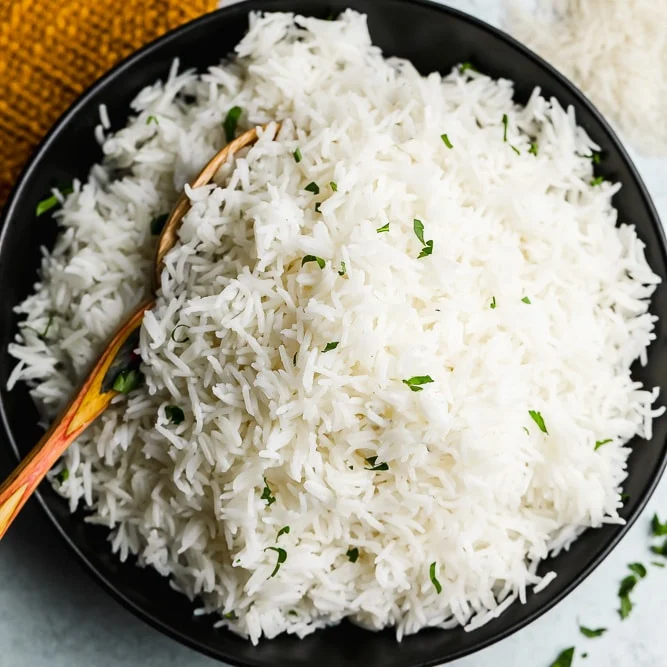How to prepare Basmati rice is the concern of every lover of this domestically produced Indian rice. Although many are in with the rice, only a few know how to cook it.
Fluffy, aromatic basmati rice ready in less than an hour – what could be better? So put away that rice cooker and get ready to prepare your new go-to side dish on the stove like a professional.
This discourse will teach you everything you need to know.
How to Prepare Basmati Rice
To prepare basmati rice, start by rinsing the rice under cold water until the water runs clear, which helps remove excess starch and prevents clumping during cooking. Then, soak the rice in cold water for about 30 minutes to an hour; this step ensures even cooking and results in fluffy grains.
After soaking, drain the rice and add it to a pot with the appropriate amount of fresh water or broth (usually a 1:1.5 ratio of rice to liquid). Bring the liquid to a boil over medium-high heat, then reduce the heat to low, cover the pot with a tight-fitting lid, and let the rice simmer gently for 15-20 minutes.

Avoid lifting the lid or stirring the rice during cooking, as this can disrupt the steaming process. Once the rice is tender and all the liquid is absorbed, remove it from the heat and let it sit, covered, for an additional 5-10 minutes to allow the grains to firm up.
Finally, fluff the rice gently with a fork before serving to separate the grains and enhance its texture.
What is the Best Way to Cook Basmati Rice
The best way to cook basmati rice involves a few key steps to ensure perfectly fluffy grains with excellent flavor. Here’s a step-by-step guide:
1. Rinsing
Start by rinsing the basmati rice under cold water until the water runs clear. This helps remove excess starch from the surface of the rice, preventing it from becoming sticky.
2. Soaking
Soak the rinsed rice in cold water for about 30 minutes to an hour. Soaking allows the rice grains to absorb water, resulting in more even cooking and a fluffier texture.
3. Ratio of Water to Rice
Use the correct ratio of water to rice. A general rule of thumb is 1.5 to 2 cups of water for every 1 cup of rice, but this can vary slightly depending on personal preference and the specific brand of rice.
4. Cooking Method
There are a few different methods for cooking basmati rice, including stovetop, rice cooker, or Instant Pot.
The stovetop method involves bringing the water and rice to a boil, then reducing the heat to low, covering the pot, and letting it simmer for 15-20 minutes until the water is absorbed and the rice is tender. Avoid stirring the rice during cooking to prevent it from becoming sticky.
5. Resting
Once the rice is cooked, allow it to rest, covered, for 5-10 minutes off the heat. This resting period allows the steam to redistribute within the rice, resulting in a more uniform texture.
6. Fluffing
Finally, fluff the rice gently with a fork to separate the grains before serving. This step helps maintain the light and fluffy texture of the basmati rice.
By following these steps, you can prepare perfectly cooked basmati rice that is light, fluffy, and full of flavor.
Should Basmati Rice Be Soaked Before Cooking?

Soaking basmati rice before cooking is a debated topic among home cooks and chefs alike. While it’s not necessary, soaking basmati rice can have its benefits. Soaking the rice for about 30 minutes to an hour before cooking allows the grains to absorb moisture, resulting in more evenly cooked rice with a fluffier texture.
Additionally, soaking can help reduce cooking time slightly. However, some argue that modern processing methods have minimized the need for soaking, and skipping this step won’t drastically affect the outcome.
Ultimately, whether or not to soak basmati rice before cooking comes down to personal preference and the desired texture of the finished dish.
Experimenting with both soaked and unsoaked methods can help determine which technique yields the best results for individual tastes and recipes.


Leave a Reply